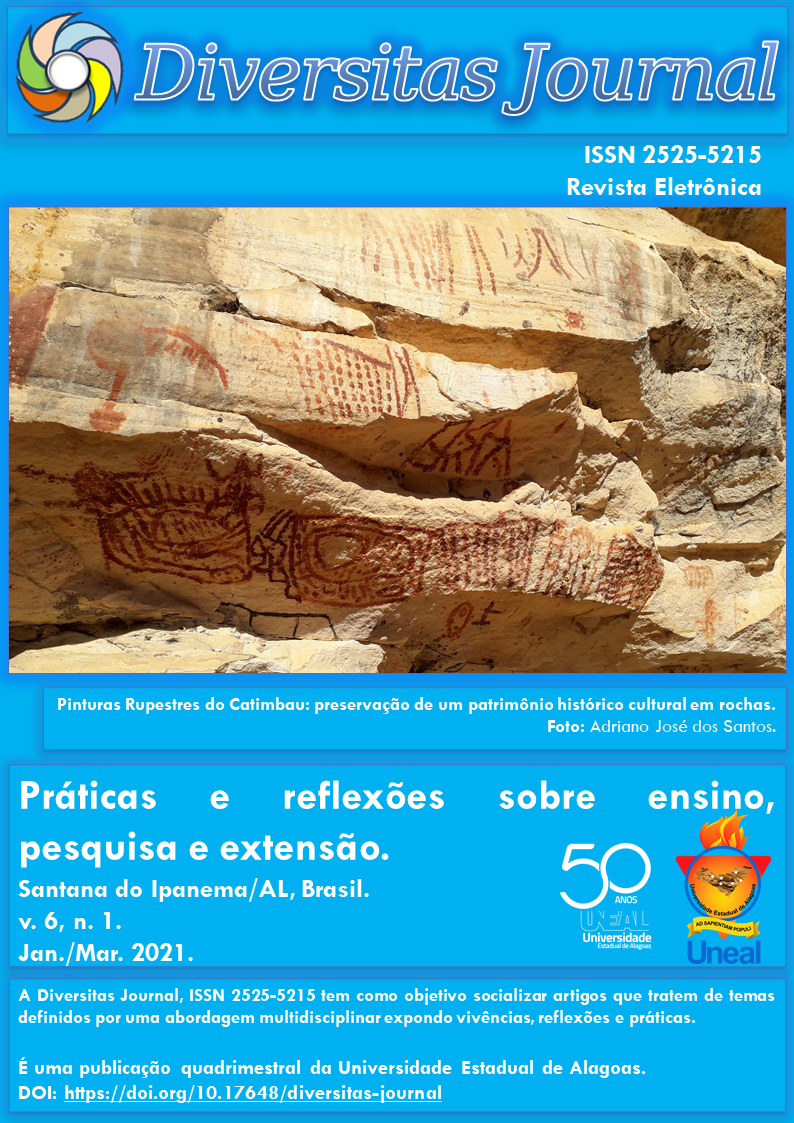Assistive Technology to Support Access toPublic Transport for People with Disabilities
DOI:
https://doi.org/10.17648/diversitas-journal-v6i1-1495Keywords:
Urban Mobility, Accessibility Platform, Application for Mobile DevicesAbstract
To assist urban mobility of people with disabilities, the SIGABEM platform is being developed by researchers from the Federal Institute of Pernambuco (IFPE) in partnership with the Greater Recife Consortium of Transport (CTM) and the State Information Technology Agency of Pernambuco (ATI ), with the support of the Amparo Foundation for Science and Technology of Pernambuco (FACEPE). The SIGABEM platform consists of an application for mobile devices and a geographic information system on the web (SIGWEB). The application for mobile devices aims to improve the accessibility of people with access to public transport in the Metropolitan Region of Recife (RMR) by providing consultations on bus interruptions, bus schedules, making statements, suggestions or compliments related to service and public transport structure and other features. The project uses the Scrum methodology for software development, or the React Native framework, based on the Javascript language and Web Services. The application is in the field test phase with the following features: user location to promote the accuracy of your search for bus stops; stop responses within 350m of the user's position; stop selection to show bus lines with their arrival times; request support for boarding; mark as favorite as lines that the user uses most; making a claim associated with the quality of service or public transport structure; provide suggestions or praise; and finally, receive notifications from managers.
Metrics
References
ABNT -Associação Brasileira de Normas Técnicas. NBR 9050: Acessibilidade a edificações, mobiliário, espaços e equipamentos urbanos. Rio de Janeiro: ABNT; 2004.
ABNT -Associação Brasileira de Normas Técnicas. NBR 15320. Rio de Janeiro: ABNT; 2005.
ANTP. O transporte urbano do século XXI. Revista dos Transportes Públicos, ano 24, n. 96, p. 95-122, 2002.
ARAÚJO, M. R. M. et al. Transporte público coletivo: discutindo acessibilidade, mobilidade e qualidade de vida. Psicologia & Sociedade, v. 23, n. 3, p. 574-582, 2011.
BERSCH, Rita. Introdução à tecnologia assistiva. Porto Alegre: CEDI, v. 21, 2008.
BERSCH, Rita; TONOLLI, José C. Introdução ao conceito de Tecnologia Assistiva e modelos de abordagem da deficiência.Bengala Legal, 2006.
CONGDON, N. et al. Causes and prevalence of visual impairment among adults in the United States. Archives of Ophthalmology (Chicago, Ill.: 1960), v. 122, n. 4, p. 477-485, 2004.
DELOITTE, L. L. P. Global Mobile Consumer Survey 2016: UK Cut. 2016.
EYES, B. M. Be my eyes. 2019.
GARCÍA, Jesus; FILHO, Teófilo. Pesquisa Nacional de Tecnologia Assistiva. São Paulo: ITS BRASIL/MCTI-SECIS. 68 p. 2012.
GIL, M.Deficiência visual.–Brasília :MEC. Secretaria de Educação a Distância, 2000.
IBGE -Instituto Brasileiro de Geografia e Estatística. Pessoas com deficiência. São Paulo, 2010.
NAÇÕES UNIDAS. World Programme of Action Concerning Disabled Persons. Disponível em: <https://www.un.org/development/desa/disabilities/resources/world-programme-of-action-concerning-disabled-persons.html>. Acessado em 28/07/2020.
MACHADO, W. C. A. Deficientes x serviços de saúde: uma sintonia necessária. Revista Eletrônica de Enfermagem, v. 3, n. 1, 2001.
PIRES, F. L. Deficiência e mobilidade: uma análise da legislação brasileira sobre gratuidade no transporte público. Textos & Contextos (Porto Alegre), v. 8, n. 2, p. 391-408, 2009.
SABBAGH, Rafael.Scrum: Gestão ágil para projetos de sucesso. Editora Casa do Código, 2014.
SANCHEZ, H. M. et al. Avaliação postural de indivíduos portadores de deficiência visual através da biofotogrametria computadorizada.Fisioterapia em Movimento, v. 21, n. 2, 2017.
SANTOS, J. P. et al. Uma Avaliação da Bengala Eletrônica (tecnologia Assistiva), para a Melhoria de Mobilidade dos Deficientes Visuais. Simpósio de Excelência em Gestão e Tecnologia, 2012.
Downloads
Published
How to Cite
Issue
Section
License
Copyright (c) 2021 Thaysa Carla Gomes da Silva, Júlio César de Oliveira Guimarães, Arthur Felipe Graciano de Andrade, Aida Araújo Ferreira, Ioná Maria Beltrão Rameh Barbosa, Vânia Soares de Carvalho

This work is licensed under a Creative Commons Attribution 4.0 International License.
The Diversitas Journal expresses that the articles are the sole responsibility of the Authors, who are familiar with Brazilian and international legislation.
Articles are peer-reviewed and care should be taken to warn of the possible incidence of plagiarism. However, plagiarism is an indisputable action by the authors.
The violation of copyright is a crime, provided for in article 184 of the Brazilian Penal Code: “Art. 184 Violating copyright and related rights: Penalty - detention, from 3 (three) months to 1 (one) year, or fine. § 1 If the violation consists of total or partial reproduction, for the purpose of direct or indirect profit, by any means or process, of intellectual work, interpretation, performance or phonogram, without the express authorization of the author, the performer, the producer , as the case may be, or whoever represents them: Penalty - imprisonment, from 2 (two) to 4 (four) years, and a fine. ”


















